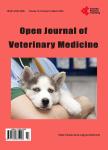Epidemiology of Increasing Hemo-Parasite Burden in Ugandan Cattle
Epidemiology of Increasing Hemo-Parasite Burden in Ugandan Cattle作者机构:Central Diagnostic Laboratory Department of Pharmacy Clinics and Comparative Medicine College of Veterinary Medicine Animal Resources and Biosecurity Makerere University Kampala Uganda Kiboga District Regional Veterinary Laboratory Department of Production and Marketing Local Government Kiboga Uganda Department of Bio-Molecular Resources and Bio-Laboratory Sciences College of Veterinary Medicine Animal Resources and Biosecurity Makerere University Kampala Uganda Mbarara District Regional Veterinary Laboratory Department of Production and Marketing Local Government Mbarara Uganda Department of Population Medicine College of Veterinary Medicine University of Minnesota St. Paul MN USA
出 版 物:《Open Journal of Veterinary Medicine》 (兽医学(英文))
年 卷 期:2014年第4卷第10期
页 面:220-231页
学科分类:1002[医学-临床医学] 100214[医学-肿瘤学] 10[医学]
主 题:Hemo-Protozoan Parasites Farming Practices Uganda Food Security
摘 要:Hemo-parasites (HP) are one of the major constraints to the economic development of the livestock industry in Uganda. Generally, the occurrence and importance of HP is a reflection of complex interactions involving the causative organisms, tick vectors, the vertebrate hosts and the environment. We carried out a cross sectional study to identify and determine the prevalence of the major HPs in Central and Western Uganda, to form a baseline for appropriate interventions. A total of 295 bovine samples were analyzed from 15 districts of Uganda;56.3% being from the Central and 43.7% from the Western region of the country for a period of six months, and a questionnaire was administered to the farmers. Thin peripheral blood smears stained with Giemsa were used during the laboratory identification of the parasites. The disease prevalence was established at 47.4%, 6.7%, 1.9% and 14.4% for Theleria parva, Babesia spp., Trypanasoma brucei, Anaplasma spp. with a corresponding disease risk ratio (DRR) of 67.4%, 9.5%, 2.6%, 20.5% respectively in Uganda. The odds of having an infection from the Central region were 1.7 times greater (P 0.05) than those from the Western region with a corresponding risk ratio of 1.2 (CI.1.1, 2.84, 95%), which showed that there exist marked differences between the two regions. Mean PCV was at 29.8%, and majority (59%) of infected animals had low PCV which varied across the months. These showed that generally, cattle in the West are more severely affected by HP than those from the Central region. The questionnaire revealed that 100% of the farmer treatments are based on clinical sign presentation, with occasional reliance on veterinarians. In conclusion, the burden of hemo-parasites is steadily increasing across the regions, and the current policies are not helping farmers who are hit the hardest by the development of antibiotic and acaricide resistance. These findings, along with previous studies, suggest that eradication HP is not feasible unless t



